Lucian's homemade jointer/planer
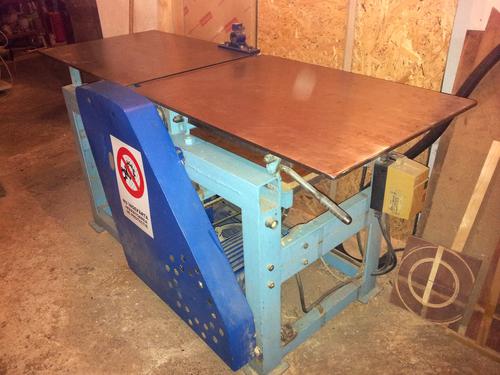 When Lucian sent me photos of his
spindle sander, I noticed it was
on what looked like a homemade jointer. I asked about it.
When Lucian sent me photos of his
spindle sander, I noticed it was
on what looked like a homemade jointer. I asked about it.
Lucian replied:
What you noticed in those photos of the Spindle Sander
was that it was standing on a
2-in-1 machine with a generous processing capacity:
A jointer over the table, working width up to 500mm
A thickness machine, working width up to 400mm, which is below the
jointer table and which work in reverse direction of advance motion of
the material.
It's a machine which I designed more then 10 years ago (probably in
2002). Some components were made by friends, and all
other operations (welding, drilling, various metal manufacturing etc.)
and the whole assembly were made by me.
Some technical data:
1. Jointer motor: 230V, 2,2kW, 3000 rpm
2. Advance motion motor for thickness: 230V 1.5KW, 1500 rpm.
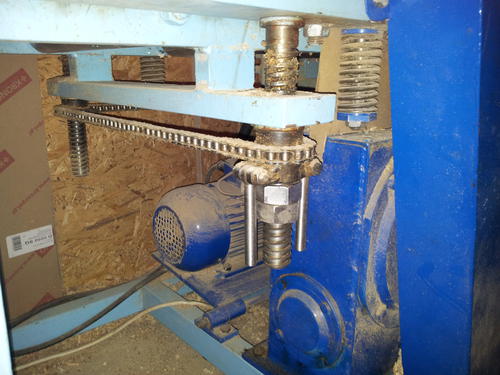 3. The planer thickness adjustment (under the table) is done by
an elevation adjustment of a table. There are 4 square threaded screws
fixed under the machine rails, equipped with 4 chain sprocket nuts. The
adjustment table is based on these screw nuts, on which a Gall chain is
passed over. By turning only one nut, the chain determines turning of
the other 3, so all 4 nuts are rotating simultaneously inducing lifting
or lowering the table, bringing it closer or farther from an shaft with
3 knives, depending on the thickness of the material to be planed.
3. The planer thickness adjustment (under the table) is done by
an elevation adjustment of a table. There are 4 square threaded screws
fixed under the machine rails, equipped with 4 chain sprocket nuts. The
adjustment table is based on these screw nuts, on which a Gall chain is
passed over. By turning only one nut, the chain determines turning of
the other 3, so all 4 nuts are rotating simultaneously inducing lifting
or lowering the table, bringing it closer or farther from an shaft with
3 knives, depending on the thickness of the material to be planed.
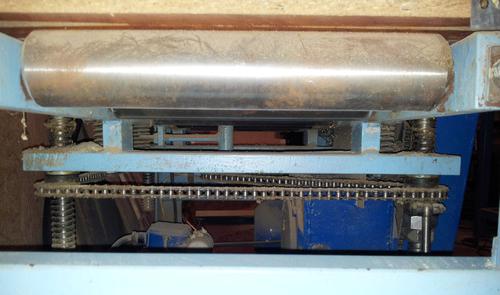
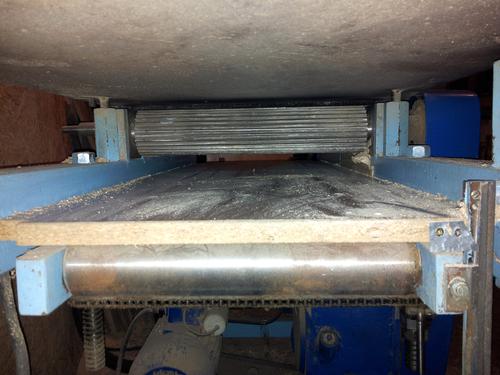 4. The feed mechanism is by a serrated roller at the infeed and
a smooth roll at the outfeed (after the cutter head). The synchronous
rotation of these two rolls is done also with a chain, driven by
a 1.5KW motor through a worm gear (donít remember exactly what gear ratio has,
there are so many years since I designed it, but I think is 1:40). The
motor and the worm gear box have two-grooved
V-belt pulleys of different diameters and so I can get four different
feed speeds for an optimal adaptation to different
hardness of the wood to be planed.
4. The feed mechanism is by a serrated roller at the infeed and
a smooth roll at the outfeed (after the cutter head). The synchronous
rotation of these two rolls is done also with a chain, driven by
a 1.5KW motor through a worm gear (donít remember exactly what gear ratio has,
there are so many years since I designed it, but I think is 1:40). The
motor and the worm gear box have two-grooved
V-belt pulleys of different diameters and so I can get four different
feed speeds for an optimal adaptation to different
hardness of the wood to be planed.
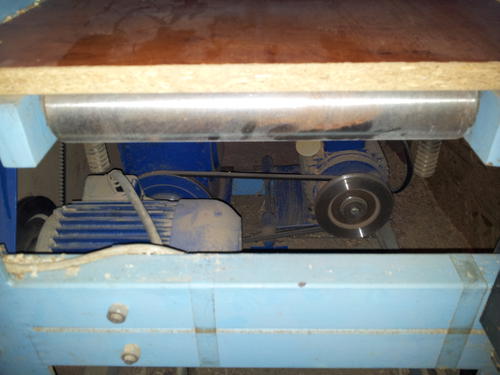
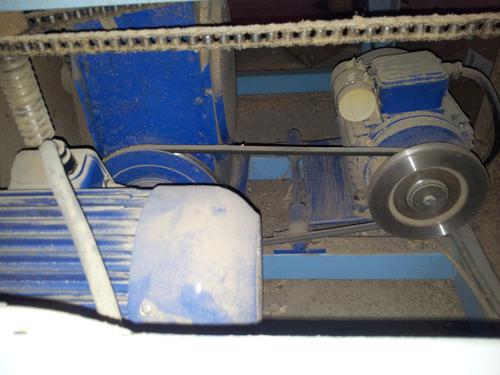
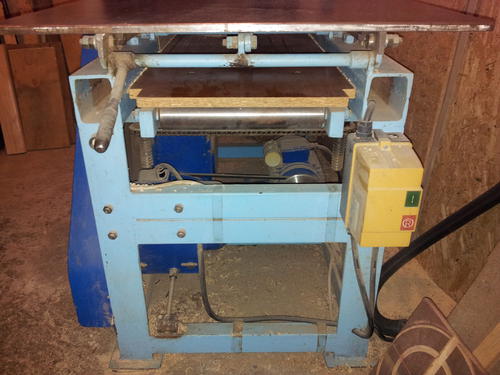
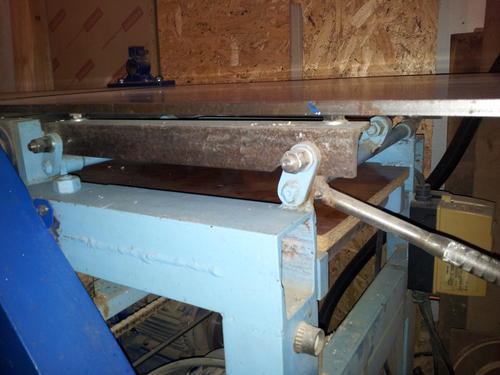
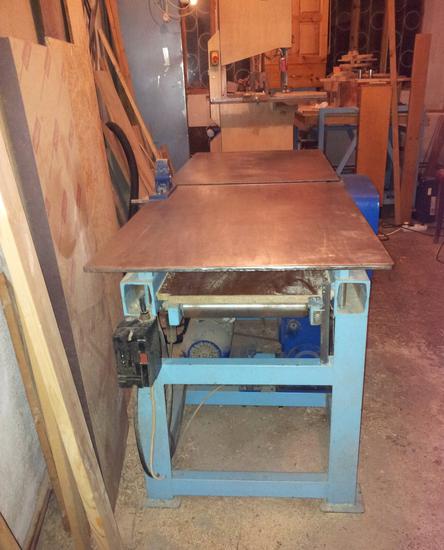
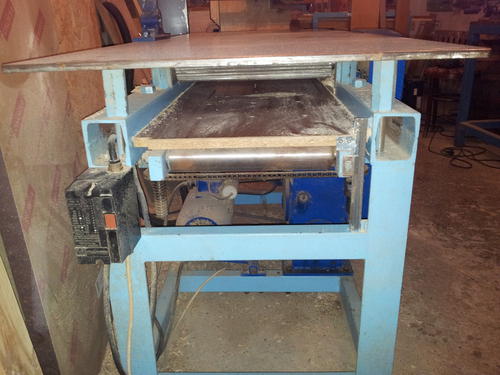
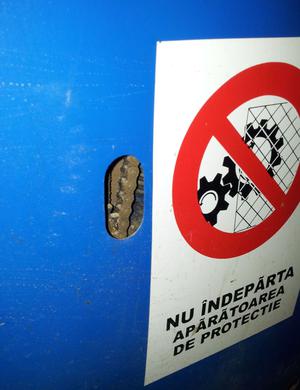
The machine works very well. It is about 95% complete. The only
thing it needs is a suction system for chips and dust, which,
unfortunately, it spreads all around my workshop.
Lucian
Six months later, lucian sent me When Lucian sent me photos of his
his dust collection system for the jointer/planer:
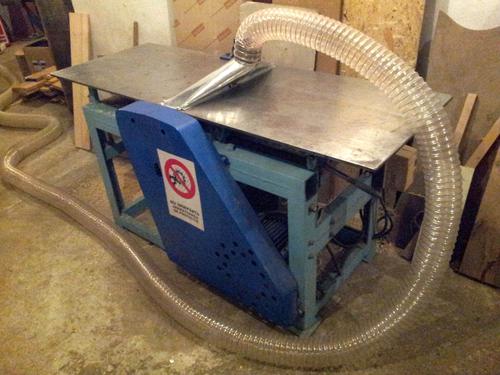
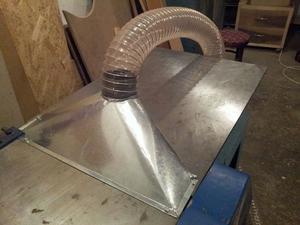 I would like to share with you the way I solved the problem of dust
generated by my homemade jointer and planer -- dust which spread
throughout my workshop and which was a serious threat to the health of
my lungs.
I would like to share with you the way I solved the problem of dust
generated by my homemade jointer and planer -- dust which spread
throughout my workshop and which was a serious threat to the health of
my lungs.
My homemade jointer and planer constructions determined the
manufacturing of two completely different dust and chips collectors, one
for jointer and another one for planer.
Making the collector for planer functioning mode was simple, it was
basically a surface that make transition from rectangle to circle with
offset and angle (used material was 0.3mm galvanized sheet) and a
cylindrical connector (0.7mm galvanized sheet) for coupling the
exhausting hose. The assembly was done with a 500 W electric soldering
iron by Sn-Pb soldering alloy.
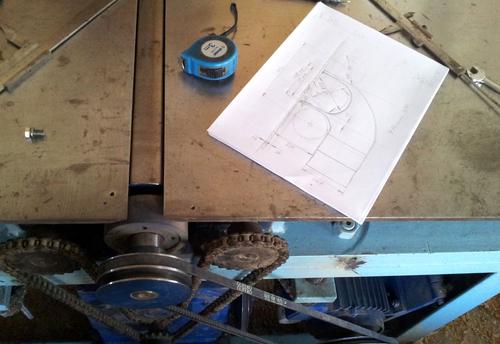
More complicated to make was the collector for the jointer. Because
of low height (130mm is the maximum thickness available), I had
to make this collector from two parts, otherwise mounting
between the two feed rollers would have been impossible.
Basically, after introducing the smaller piece between rollers and
lifting it, the larger piece (which is made of
three parts: a rectangular duct, a rectangle to circle transition and a
cylinder) is positioned just below the smaller piece and rising the
laminated table, the upper part penetrates inside the lower part by 20mm,
becoming a single unit. The materials used are the same, 0.7mm and 0.3mm
galvanized sheet and Sn-Pb solder.
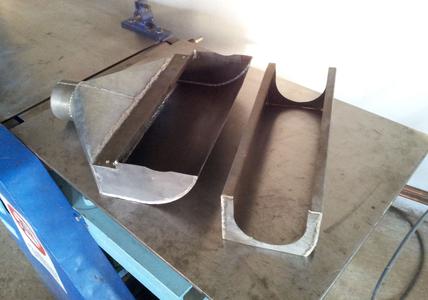
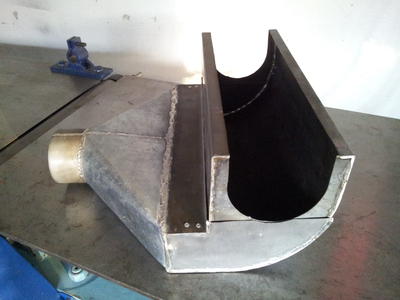
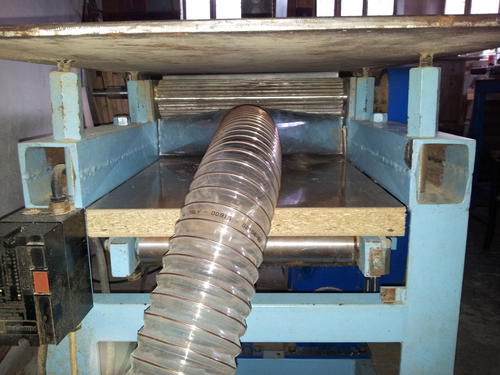 After testing it, a small amount of dust and chips escape to the
melamine table when the machine works as planer, but in the jointer mode
the dust extraction is total!
After testing it, a small amount of dust and chips escape to the
melamine table when the machine works as planer, but in the jointer mode
the dust extraction is total!
Greetings from Romania!
 3. The planer thickness adjustment (under the table) is done by
an elevation adjustment of a table. There are 4 square threaded screws
fixed under the machine rails, equipped with 4 chain sprocket nuts. The
adjustment table is based on these screw nuts, on which a Gall chain is
passed over. By turning only one nut, the chain determines turning of
the other 3, so all 4 nuts are rotating simultaneously inducing lifting
or lowering the table, bringing it closer or farther from an shaft with
3 knives, depending on the thickness of the material to be planed.
3. The planer thickness adjustment (under the table) is done by
an elevation adjustment of a table. There are 4 square threaded screws
fixed under the machine rails, equipped with 4 chain sprocket nuts. The
adjustment table is based on these screw nuts, on which a Gall chain is
passed over. By turning only one nut, the chain determines turning of
the other 3, so all 4 nuts are rotating simultaneously inducing lifting
or lowering the table, bringing it closer or farther from an shaft with
3 knives, depending on the thickness of the material to be planed.
 When Lucian sent me photos of his
spindle sander, I noticed it was
on what looked like a homemade jointer. I asked about it.
When Lucian sent me photos of his
spindle sander, I noticed it was
on what looked like a homemade jointer. I asked about it.














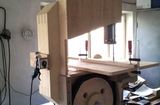 Bandsaw
Bandsaw Oscillating spindle sander
Oscillating spindle sander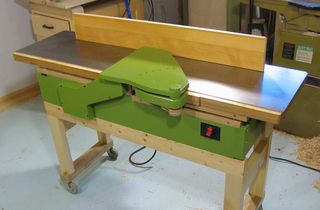
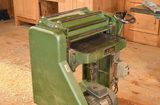 Dad's 20" thickness
Dad's 20" thickness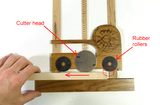 Planer snipe
Planer snipe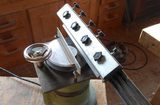 Planer blade sharpening machine
Planer blade sharpening machine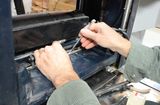 Changing planer knives
Changing planer knives